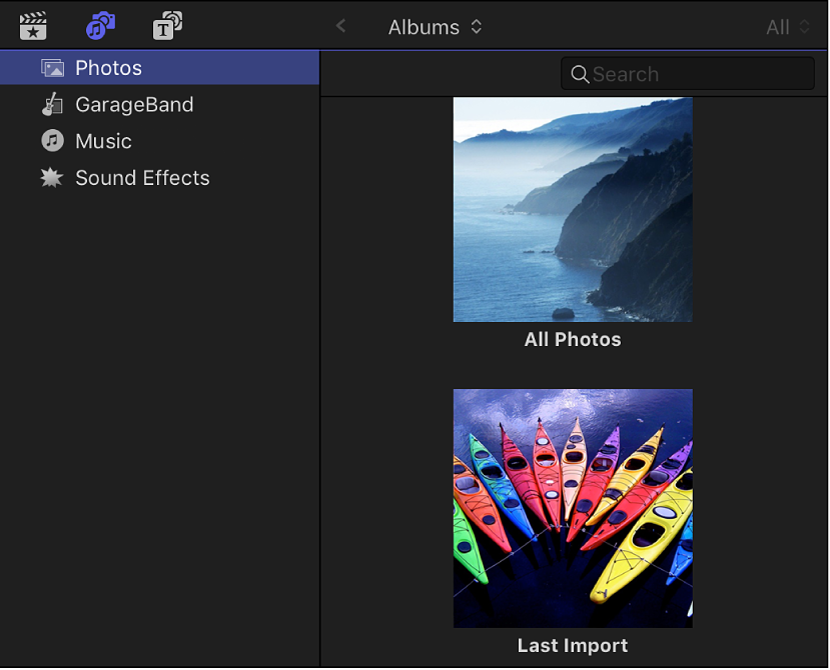Final Cut Pro X User Guide
- Welcome
-
- What’s new in Final Cut Pro 10.4.9
- What’s new in Final Cut Pro 10.4.7
- What’s new in Final Cut Pro 10.4.6
- What’s new in Final Cut Pro 10.4.4
- What’s new in Final Cut Pro 10.4.1
- What’s new in Final Cut Pro 10.4
- What’s new in Final Cut Pro 10.3
- What’s new in Final Cut Pro 10.2
- What’s new in Final Cut Pro 10.1.2
- What’s new in Final Cut Pro 10.1
- What’s new in Final Cut Pro 10.0.6
- What’s new in Final Cut Pro 10.0.3
- What’s new in Final Cut Pro 10.0.1
-
- Intro to effects
-
- Intro to transitions
- How transitions are created
- Add transitions
- Set the default transition
- Delete transitions
- Adjust transitions in the timeline
- Adjust transitions in the inspector and viewer
- Merge jump cuts with the Flow transition
- Adjust transitions with multiple images
- Modify transitions in Motion
-
- Add storylines
- Use the precision editor
- Conform frame sizes and rates
- Use XML to transfer projects
-
-
- Intro to media management
-
- View a clip’s information
- Override a clip’s metadata
- Locate source media files
- Relink clips to media files
- Consolidate projects and libraries
- Back up projects and libraries
- Create optimized and proxy files
- Create a proxy-only project
- Manage render files
- View background tasks
- Convert incompatible media
- Create camera archives
- Glossary
- Copyright

Import into Final Cut Pro from Photos
When you import photos and video clips from Photos or another photos app into Final Cut Pro, the media is always copied into the Final Cut Pro library, regardless of your settings in Import preferences.
Note: This is the only exception to the general rule that the media is imported using the import settings you defined in Import preferences. See Import into Final Cut Pro from your Mac or storage device.
Note: You can’t use Aperture or iPhoto in versions of the Mac operating system after macOS Mojave 10.14. If your photos are in an Aperture or iPhoto library, you can update your photo library to Photos. See the Apple Support articles Migrate your Aperture libraries to Photos or Adobe Lightroom Classic and Updating from iPhoto to Photos for macOS.
In Final Cut Pro, open the Photos and Audio sidebar by doing one of the following:
Choose Window > Go To > Photos and Audio (or press Shift-Command-1).
Click the Photos and Audio button in the top-left corner of the Final Cut Pro window.

In the Photos and Audio sidebar, click the photos app you want to import from.
If you’re using macOS Mojave 10.14 or earlier, you may see Photos, iPhoto, or Aperture in the list of photos apps.

Use the pop-up menus at the top of the browser to choose a category and narrow your search.
To use one or more photos or video clips in your project, drag the items from the browser to the timeline.
To select multiple clips, Command-click them or drag a selection rectangle around them.
Tip: If you want photos or video clips from a different photo library to appear in the sidebar, open the other photo library in the Photos app. Then, in the General pane of Photos preferences, click “Use as System Photo Library.”